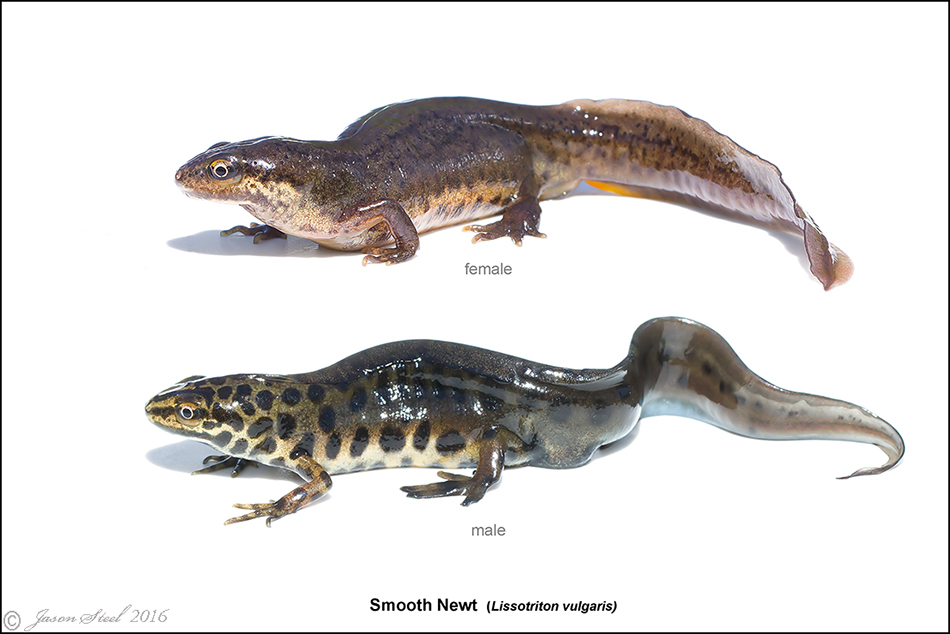
Scientific Name: Lissotriton vulgaris
Conservation Status: Least Concern (IUCN Red List)
The Smooth Newt, also known as the Common Newt, is one of the most widespread amphibians in the UK. Its adaptability makes it a frequent visitor to garden ponds, where it can be seen gracefully swimming or hiding among vegetation.
Smooth Newts inhabit a wide variety of freshwater environments, including ponds, ditches, and slow-moving streams. They prefer ponds with abundant vegetation and clean water, which provide ideal conditions for breeding and shelter. To attract Smooth Newts to your garden pond, avoid adding fish and ensure a mix of aquatic plants for cover and egg-laying.
Explore native aquatic plants perfect for Smooth Newts at Aqua Eden, where you’ll find a range of options to enhance your pond.
Smooth Newts begin their breeding season in early spring (March-May). Males perform elaborate courtship displays to entice females. Eggs are laid singly and wrapped in plant leaves. Larvae emerge within 2-3 weeks and develop into juveniles over the summer, leaving the water by autumn. Most adults hibernate on land in frost-free, damp places like compost heaps, log piles, or under rocks.
Smooth Newts measure 7-11 cm in length, with males often slightly larger than females. Their lifespan in the wild ranges from 6 to 10 years under favorable conditions.
Classified as Least Concern, the Smooth Newt remains common but still faces threats from habitat destruction, pollution, and climate change. Creating and maintaining garden ponds is a simple way to support their populations.
Look for Smooth Newts in ponds during their breeding season from March to July. They are most active at dusk and night but can also be spotted during the day.
Males are easily recognized in the breeding season by their wavy crest running from head to tail and their orange belly with black spots. Females are less vividly coloured but have a similar spotted belly. Both sexes have smooth, moist skin, distinguishing them from other newt species.
To encourage Smooth Newts, follow these tips:
Visit Aqua Eden for a range of plants and advice to make your pond a haven for Smooth Newts and other wildlife. With these adjustments, you can enjoy the presence of this delightful species in your garden.
You can learn more about this newt from great charities like Froglife

Aqua Eden, Jordans Courtyard,
Ilminster, TA19 9PY
Open Tue-Fri 10am – 3pm
check social media before travelling for any changes
hello@AquaEden.co.uk
We’re the South West’s newest Water Garden Centre and Design Studio, nestled in the heart of Jordans Courtyard, Ilminster, just off the A303 and J25 of the M5. Whether you’re looking to enhance an existing water feature or create a brand new oasis, we’re here to inspire, educate, and empower you on your water gardening journey. Our friendly, knowledgeable team is passionate about helping you bring your watery dreams to life, and we’re with you every step of the way.
If you’d prefer to leave it to the professionals, our partner company, DU Waterscapes, brings years of experience and expertise to the table. As award-winning water feature artists, they offer expert maintenance and custom installations tailored to your needs. Experience their stunning displays at Aqua Eden and discover how they can bring a slice of Eden to your home. Learn more on their website!